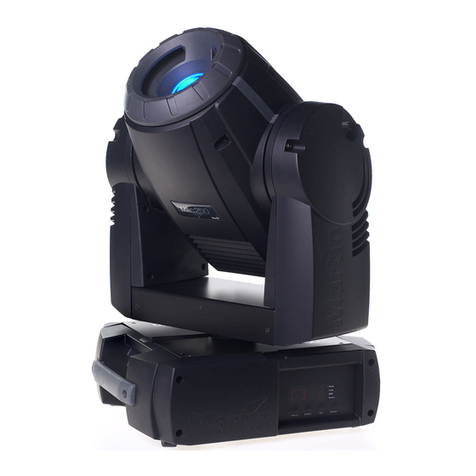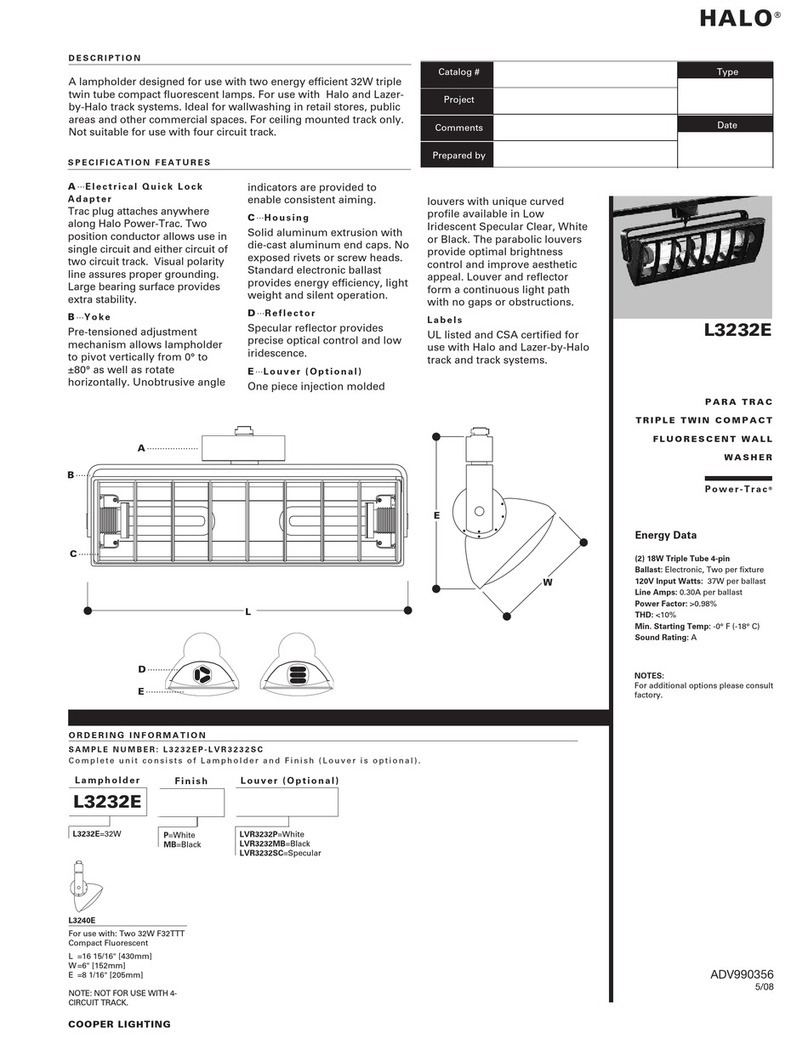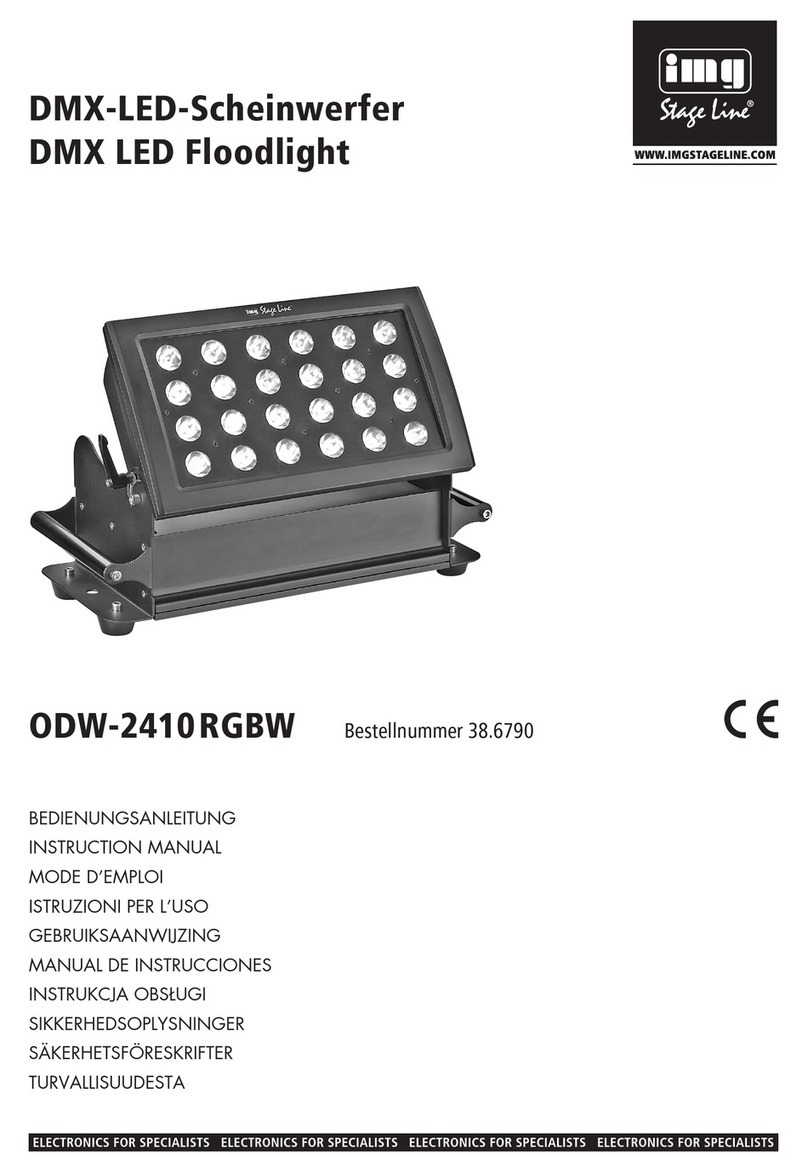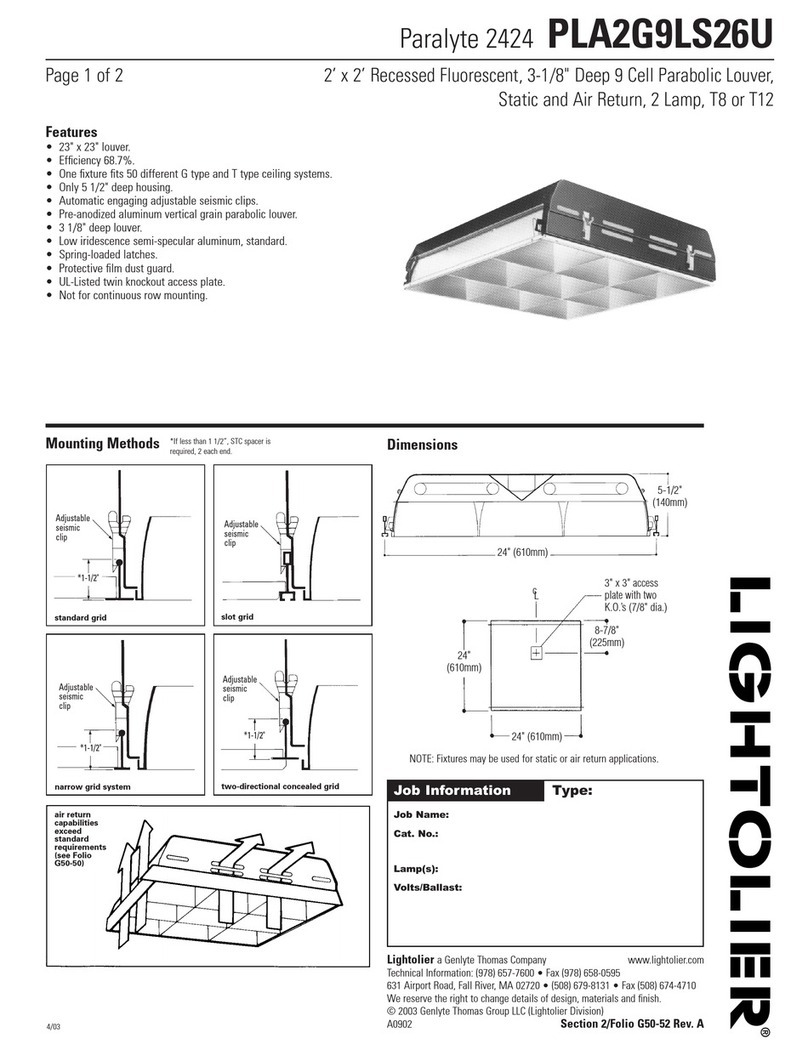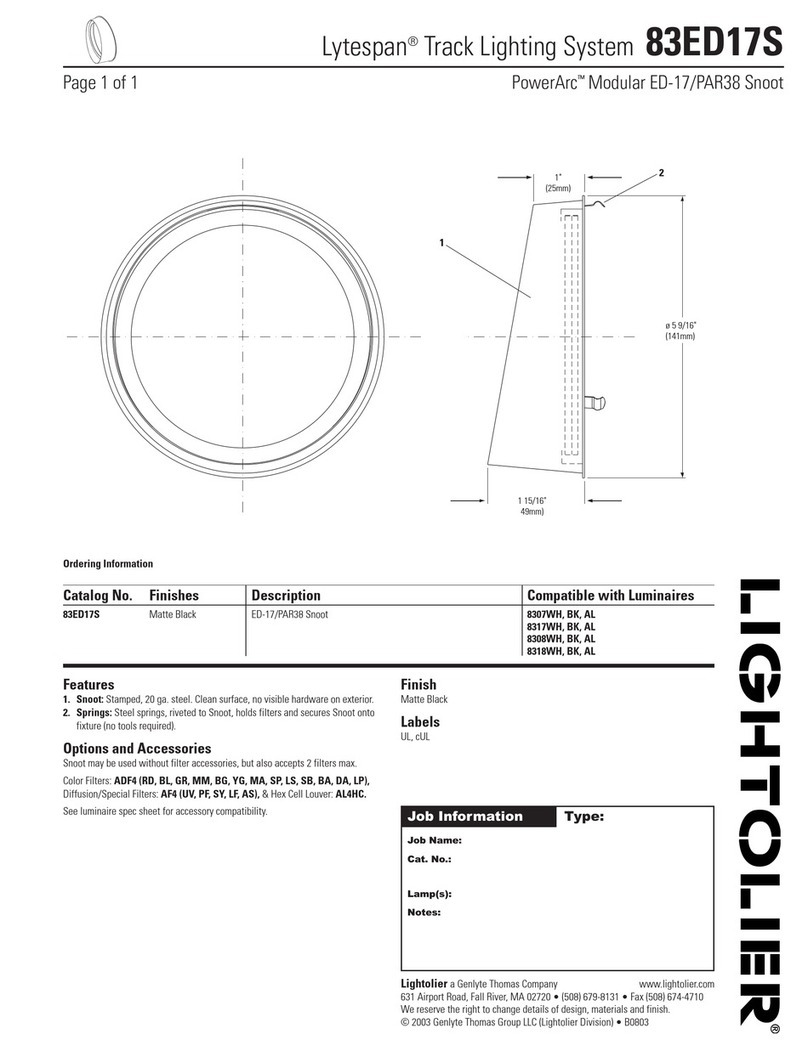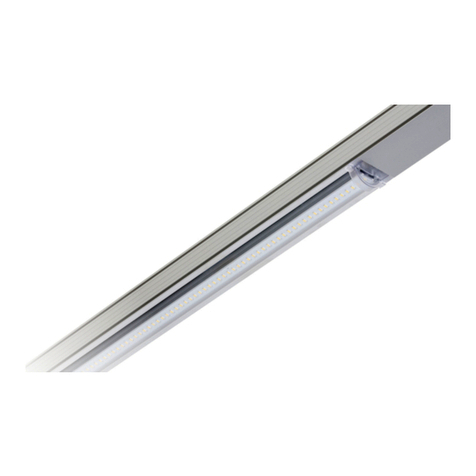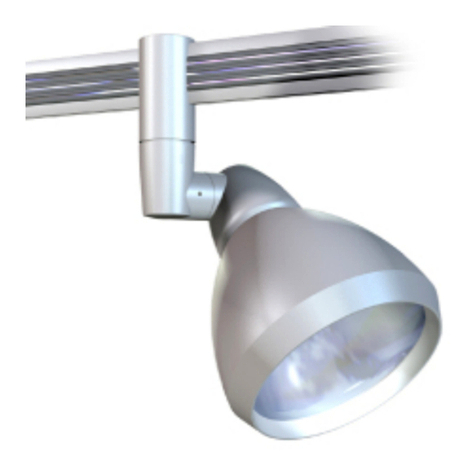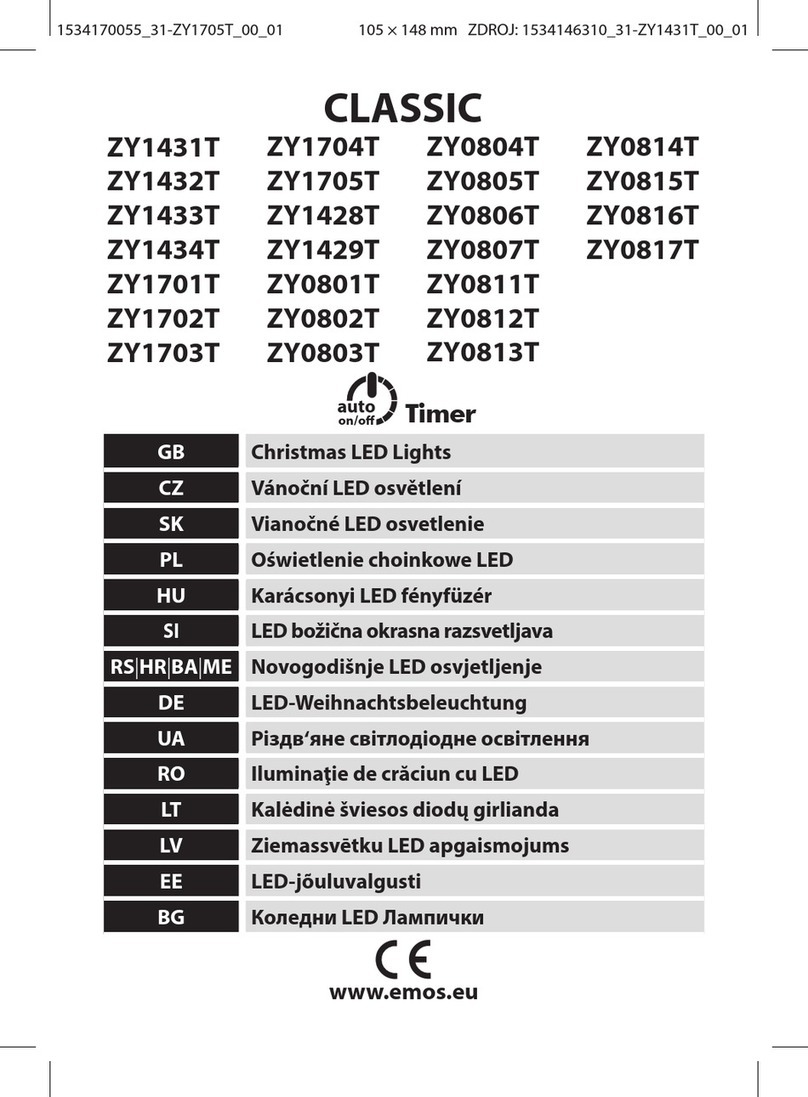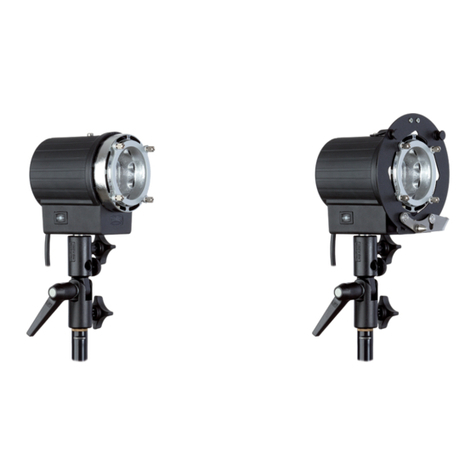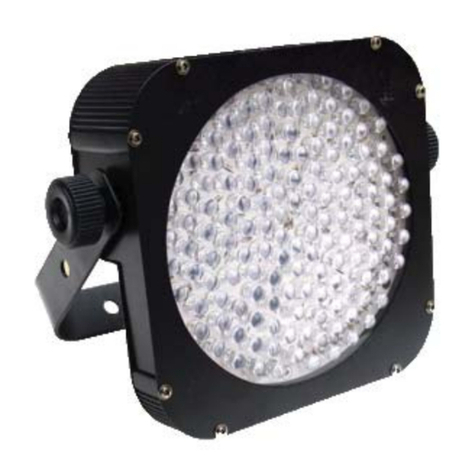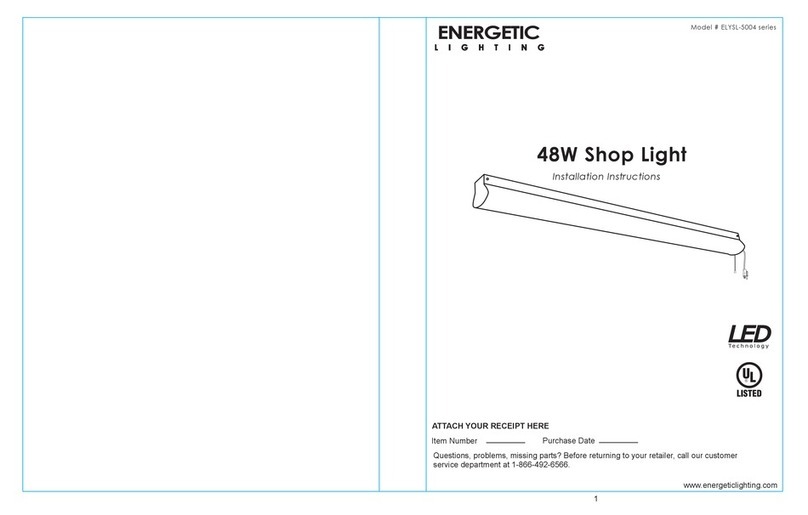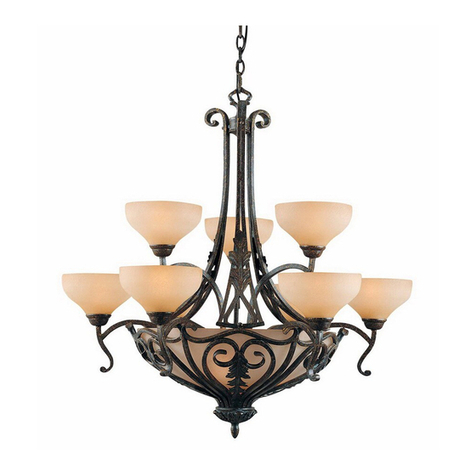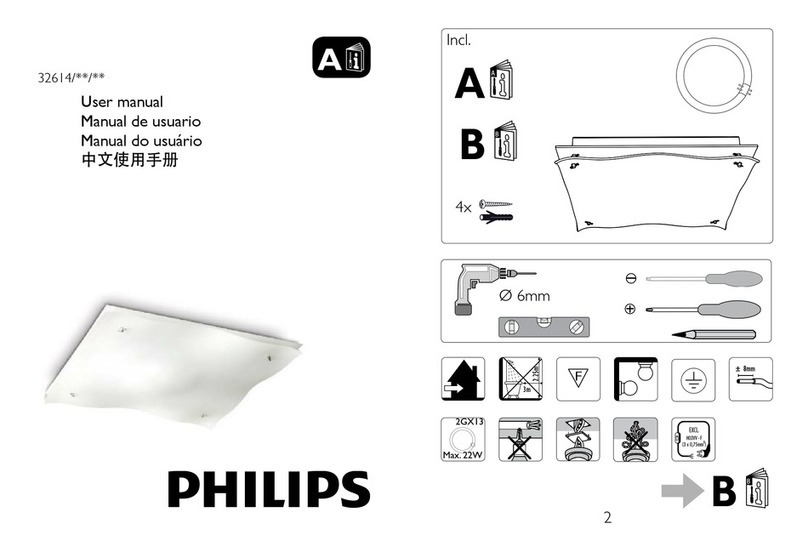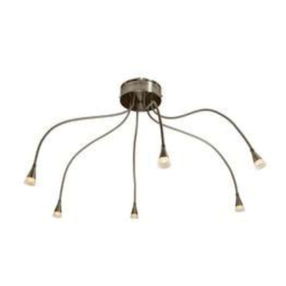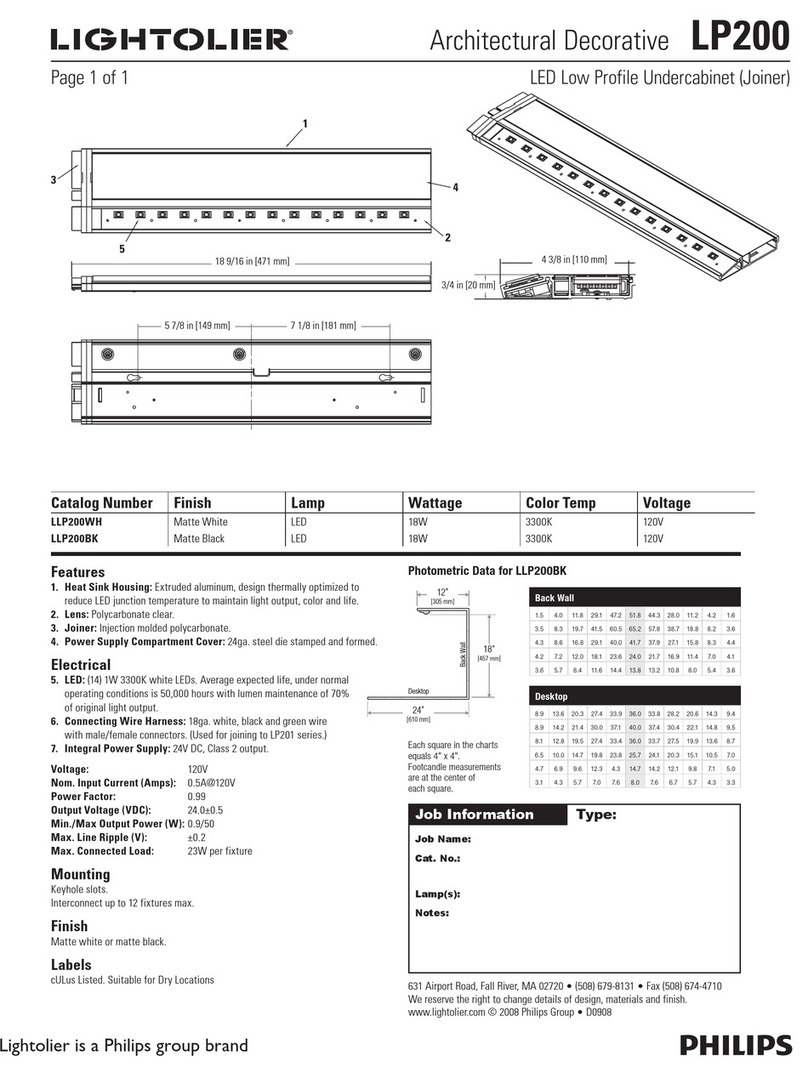
www.one-lux.com 4
INSTALLATION & OPERATION of ‘/DST’ DALI Self-test versions
Automatic Testing
Once commissioned, the One-LED SoloTM will automatically determine if it is
being used in Standalone Self-Test mode or connected to a DALI network.
If Standalone Self-Test is detected, it will establish randomised delay times
to ensure the next scheduled tests do not coincide with the same test of
adjacent luminaires. (See table below for details of ‘Test Delay Time’ ranges).
Subsequent routine testing will then take place according to the ‘Test Interval’
times detailed in the table below.
If the One-LED SoloTM module detects it is installed on a DALI network, it will
congure itself according to the default DALI specication. (See table below).
It is important to note that in DALI mode, randomisation will not be set
and it will await test delay times to be congured by the DALI master.
In the event of loss of communication with the DALI master, automatic
testing will revert back to the Self-Test ‘Test Intervals’, but ‘Test Delay Times’
will remain as congured by the DALI master.
Automatic Testing Information
Test Type Mode Duration Test Delay time Test Interval / Occurrence Notes
Commissioning Test
Self-Test 1 or 3 Hours* 24 Hours Once* The luminaire will carry out a Duration Test 24 hours after initial power up. *This test cycle will be repeated if un-successfull
DALI 1 or 3 Hours* 24 Hours Once* The luminaire will carry out a Duration Test 24 hours after initial power up. *This test cycle will be repeated if un-successfull
Function Test
Self-Test 1 Minute 1-15 Days Every 28 Days -
DALI 1 Minute 0 Every 7 Days Caution! Factory default of zero test delay time is set for DALI Mode
Duration Test
Self-Test 1 or 3 Hours* 1-51 Weeks Every 51 Weeks -
DALI 1 or 3 Hours* 0 Every 52 Weeks Caution! Factory default of zero test delay time is set for DALI Mode
Commissioning:
Once the luminaire has been installed and availability of the un-switched
supply is deemed stable, connect the battery, then apply mains power to
begin the commissioning process.
After applying power, the One-LED SoloTM will stay in commissioning mode
for a minimum of 48 hours + the Duration Test period. The rst 24 hours is
to fully charge the battery before its Duration Test and second 24 hours to
recharge the battery for normal use.
If it is anticipated that the un-switched supply may be interrupted
before normal use, we advise that the battery is left disconnected and
commissioning is delayed until the supply is stable.
If the luminaire has been stored for a number of months, it may be necessary
to repeat the initial charge/discharge process several times to re-condition
the battery and achieve full rated emergency duration.
After successful commissioning, the battery should be marked with the date
of commission.
A One-LED SoloTM can be returned to standalone self test at any time by
disconnecting it from the DALI network and forcing a Function Test from
the test switch or by cycling the un-switched mains supply. (See page 5 for
details).
To fully reset all test times, disconnect the mains, battery power and
DALI connections. Once power is restored, the commissioning cycle and
randomisation process will be re-initiated.
Short discharge periods each month for the Function Test will not adversely
affect One-LUX batteries and should be considered as a maintenance
exercise for the battery. Regular full discharge cycles will however adversely
affect the design life of the battery, so excessive testing should be avoided
wherever possible.
A full summary of automatic test timings can be seen in the table below.
The status of the One-LED SoloTM can be determined at any time from the
indicator LED. Details of the indicator LED status conditions and integral
test switch functionality can be found on page 5.
EMERGENCY | ONE-LEDTM
SOLOTM | NON MAINTAINED LED LAMP, DRIVER & LiFePO4 BATTERY KIT

